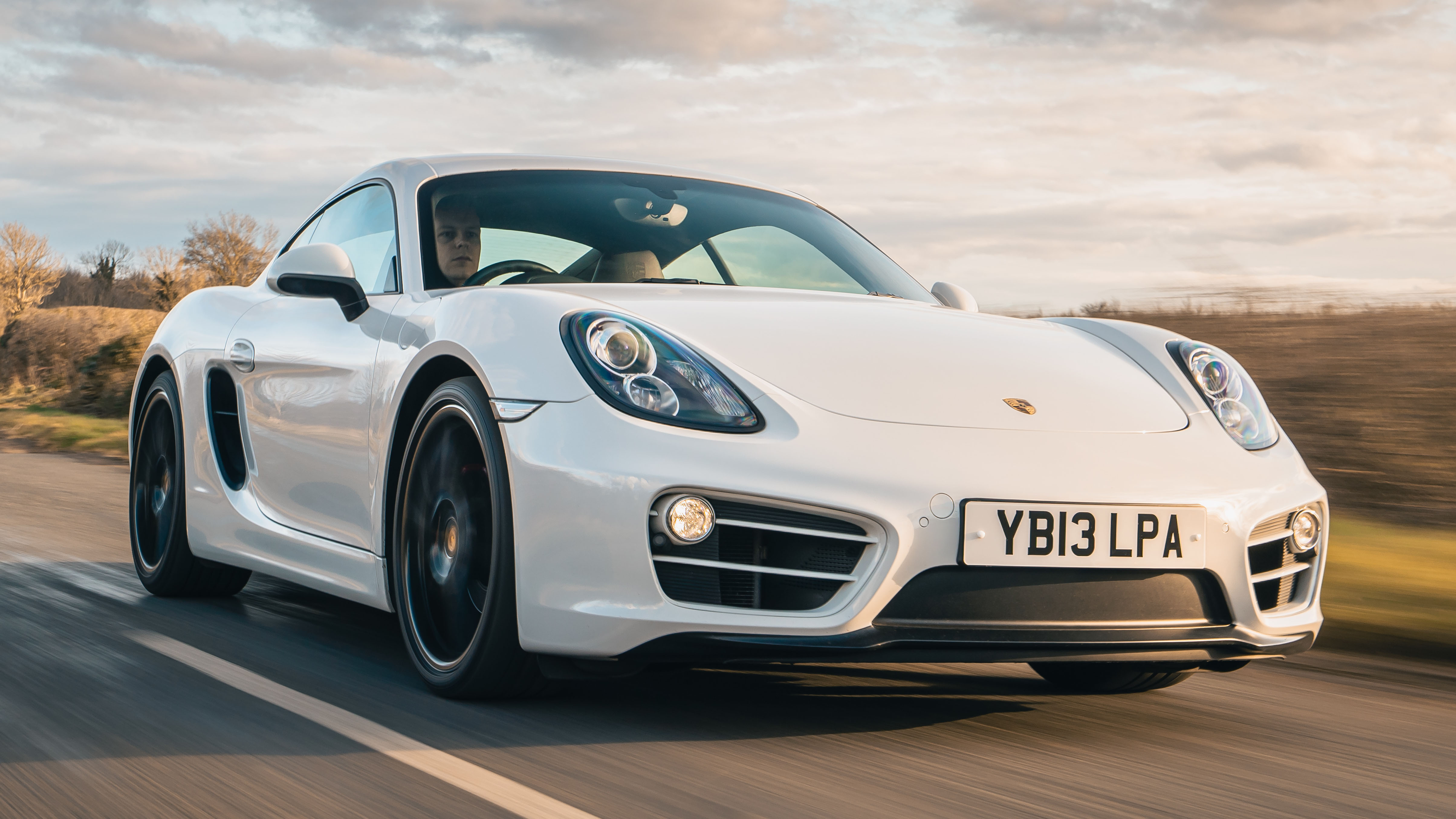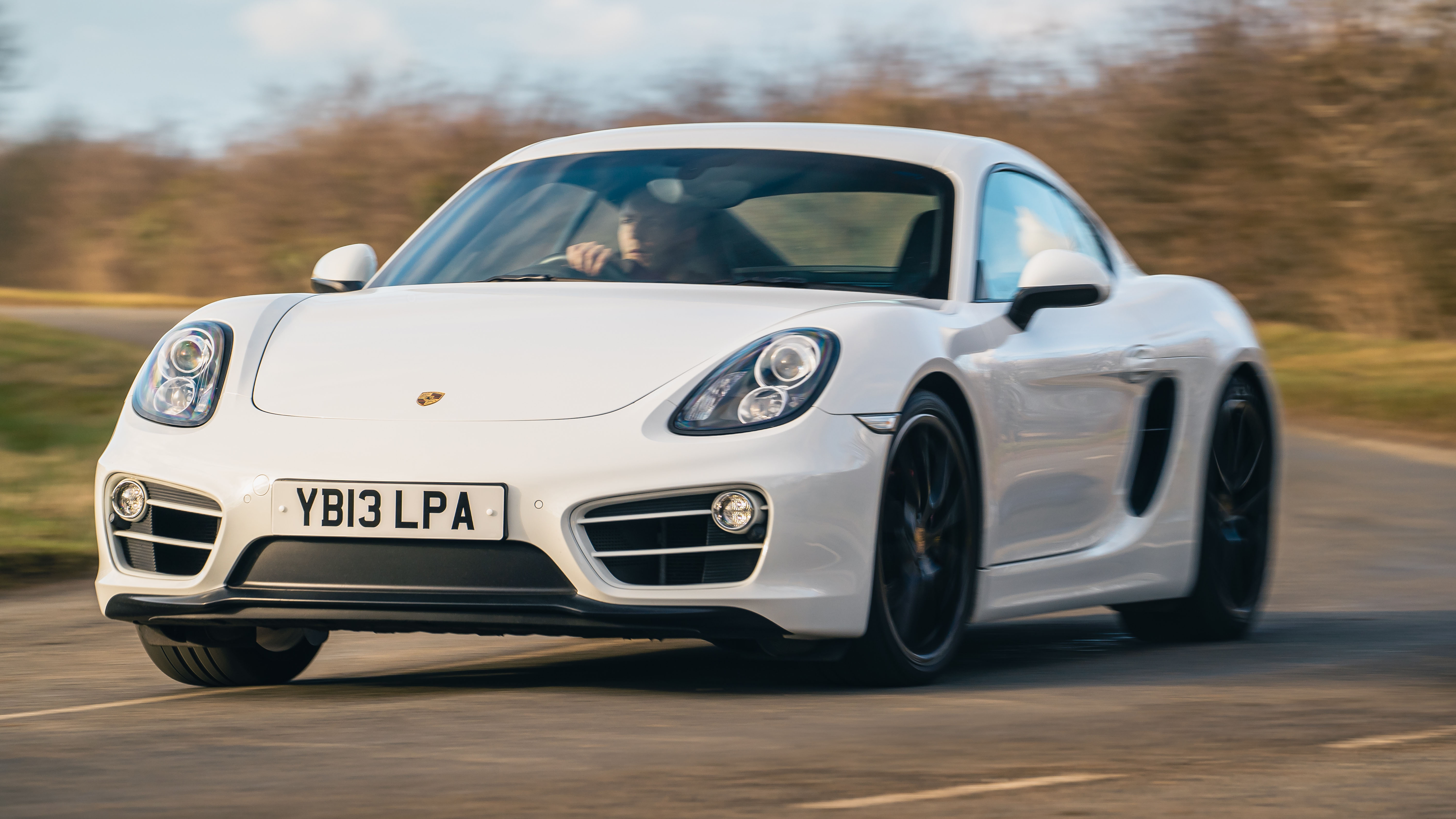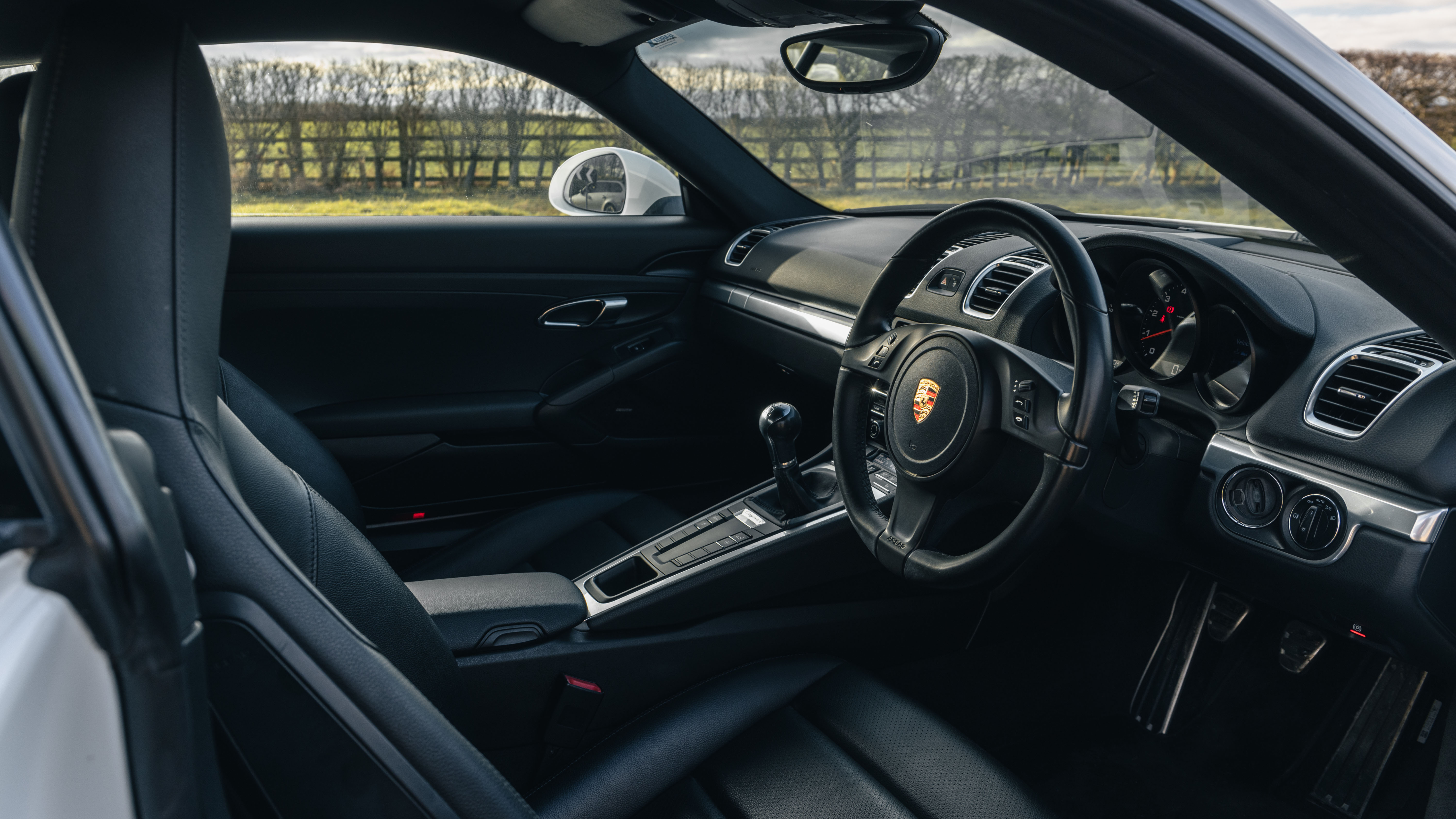
Driving
What is it like to drive?
The Cayman is emphatically a chassis car, not an engine car (though its engines are still rather lovely). So if you adore that sensation of being helplessly pinned back in your seat whenever you floor the throttle… don’t buy a Cayman.
If however you love that sense of a car working all four tyres evenly, gripping tenaciously and maintaining phenomenal composure and grace in twists and turns, you can do no better. The 981 has a sensational chassis, with its low centre of gravity and perfectly balanced weight distribution contributing to an almost telepathic, instinctive handling balance. It’s flattering to drivers of any ability, so much so you might end up yearning for more power to work the chassis harder anyway. The irony.
It must be said that the steering – unlike the hydraulically-assisted 987-gen Cayman – isn’t standout here. In 2013 Porsche was new to electrically assisted power steering and early 991-gen 911s, plus Boxsters and Caymans, lost the granular feedback Porsches had prided themselves on. It’s extremely accurate and well-weighted – better than the steering in a Jaguar F-Type or any BMW M car – but perhaps not quite as connoisseur-worthy as the rest of the handling.
WHICH IS BETTER: 2.7 OR 3.4?
I’d love to pretend that there’s not much difference between them, and you really don’t notice the 50bhp leap between Cayman and Cayman S… but you do. The S feels brawnier everywhere. The usual long Porsche gearing accentuates that feeling of waiting for the 2.7 to get on with it. Porsche claimed the 2.7 would accelerate from 0-62mph in 5.7sec (5.4 with PDK) and hit 125mph in 21sec (or 20.6 with PDK). The top speed is 165mph. The S knocks half a second off the 0-62 sprint, and tops out beyond 170mph.
THEN AGAIN, YOU BOUGHT A SPORTS CAR SO YOU'D NEED TO SHIFT GEARS AND KEEP IT ON THE BOIL, RIGHT?
Speaking of gearboxes, the manual is a delight, but a rare one. Only one in four UK-specced 981s stuck with the standard-fit six-speed stick-shift. Three quarters went for the circa £1,700 option of the twin-clutch PDK. In fairness, it’s a fast-shifting transmission, and the long seventh gear makes for incredible cruising fuel economy – how does 45mpg grab you?
ANYTHING ELSE TO LOOK OUT FOR?
Beware early-build cars which still have the unintuitive button-shift steering wheel: Porsche was bloody-minded enough to charge extra for paddles back in the day and took its time admitting the back-to-front shift buttons were a mistake before making the paddleshift wheel standard with PDK later.
Here's a geek fact: the 981 sounds better inside than the 987 if you’re sitting on the right (which is where drivers go in Britain). The previous-gen Cayman’s engine breathed in on the left only, which meant the passenger seat got more induction noise when it was built in right-hand drive.
For the 981, the engines breathed on both sides, so whichever side you’re sat on, you’re immersed in an expensive flat-six yowl. The optional sports exhaust is a desirable bit of kit fitted to a good proportion of UK cars: if you’re test-driving one, hit the button to check the flap hasn’t got stiff and stifled the noise.
PASM, or Porsche Active Suspension Management, was another popular option. However, don’t believe the salesperson claiming it’s essential to get the best out of the Cayman. Yes it’s nice to have one fewer blank button on the centre console, but the adaptive dampers are three times as expensive to replace if you have a fault or clobber a pothole, and even on 20-inch rims the standard passive set-up has a great compromise of comfort, compliance and cornering.
Featured

Trending this week
- Car Review
BMW iX3






